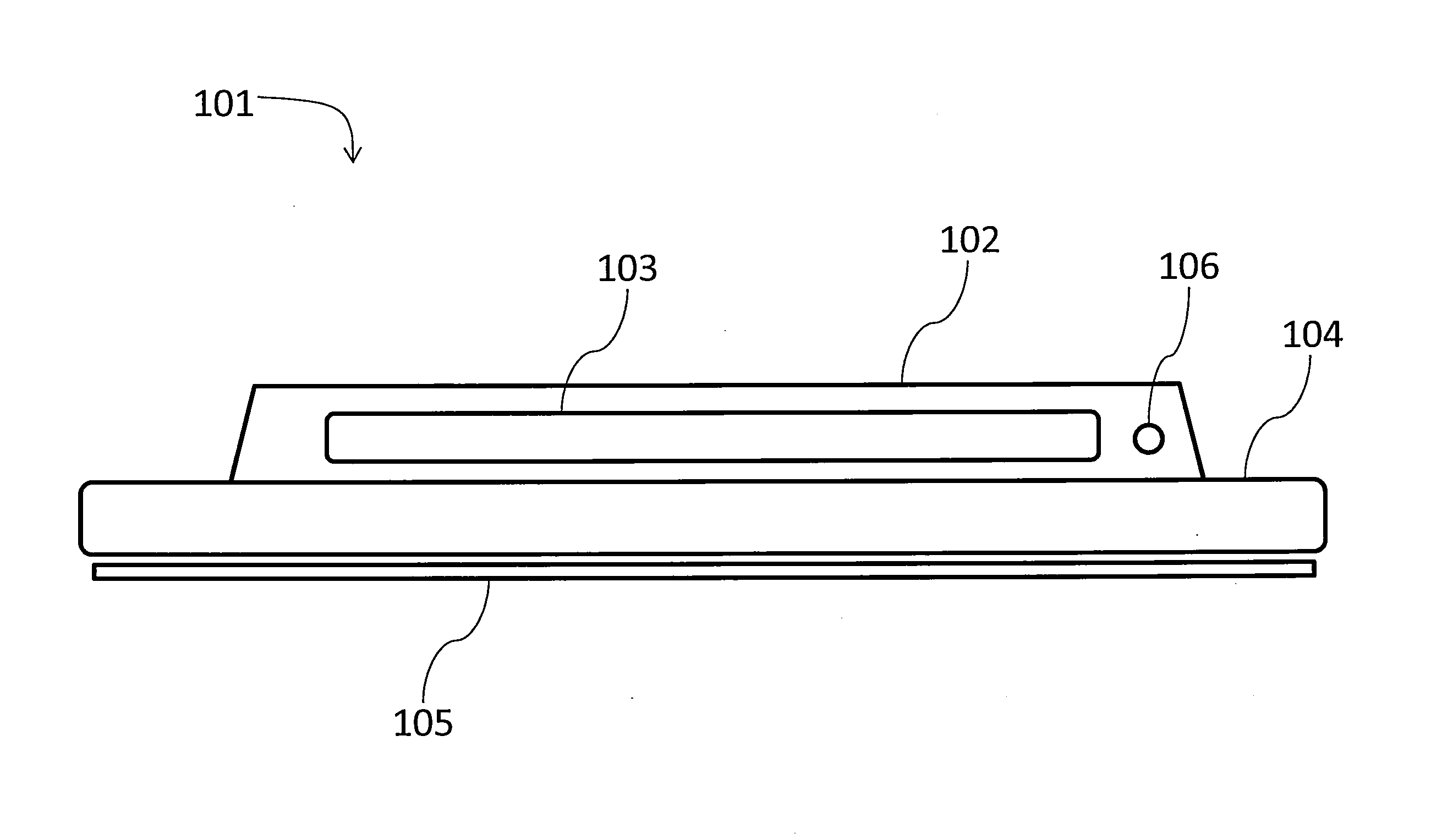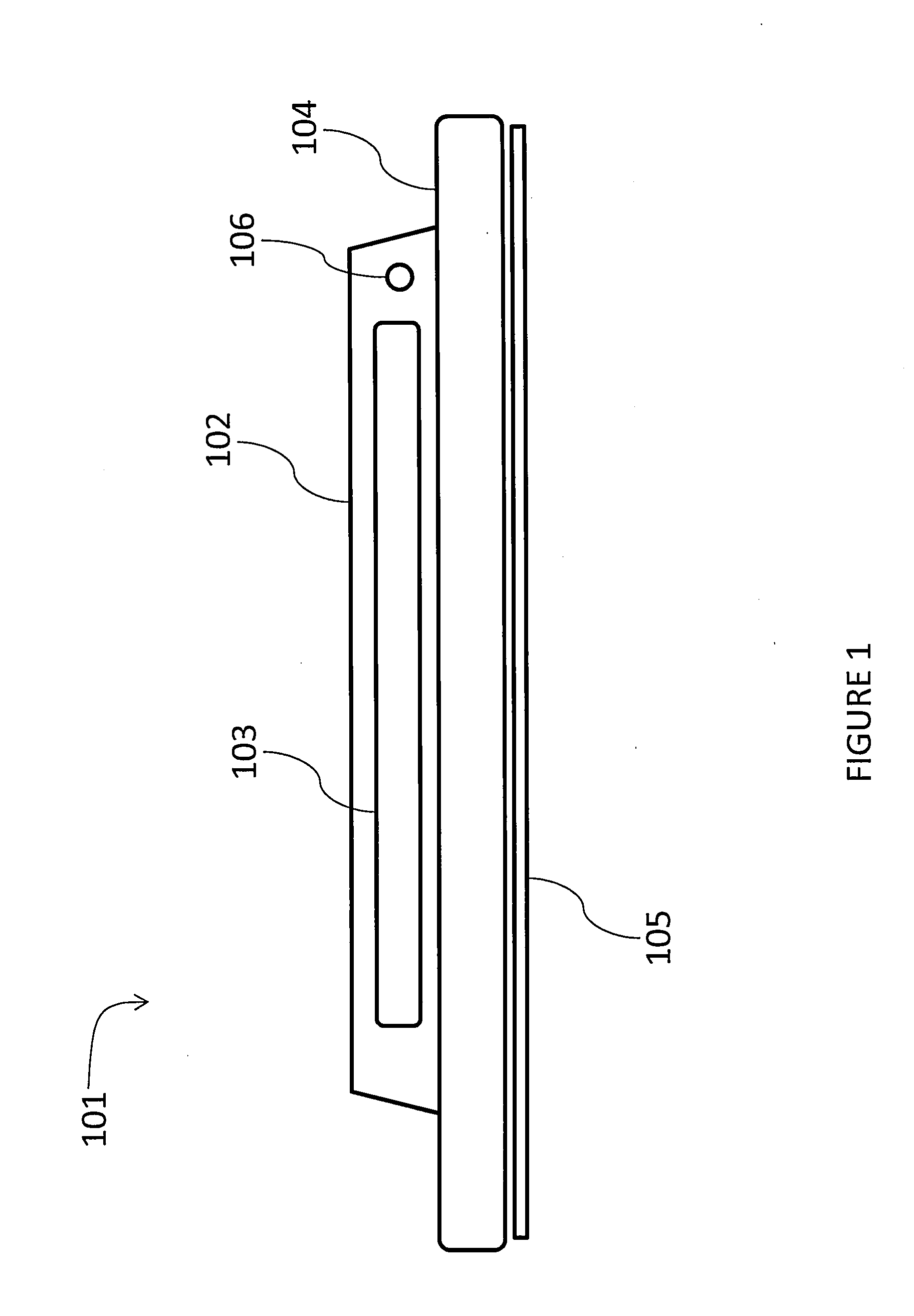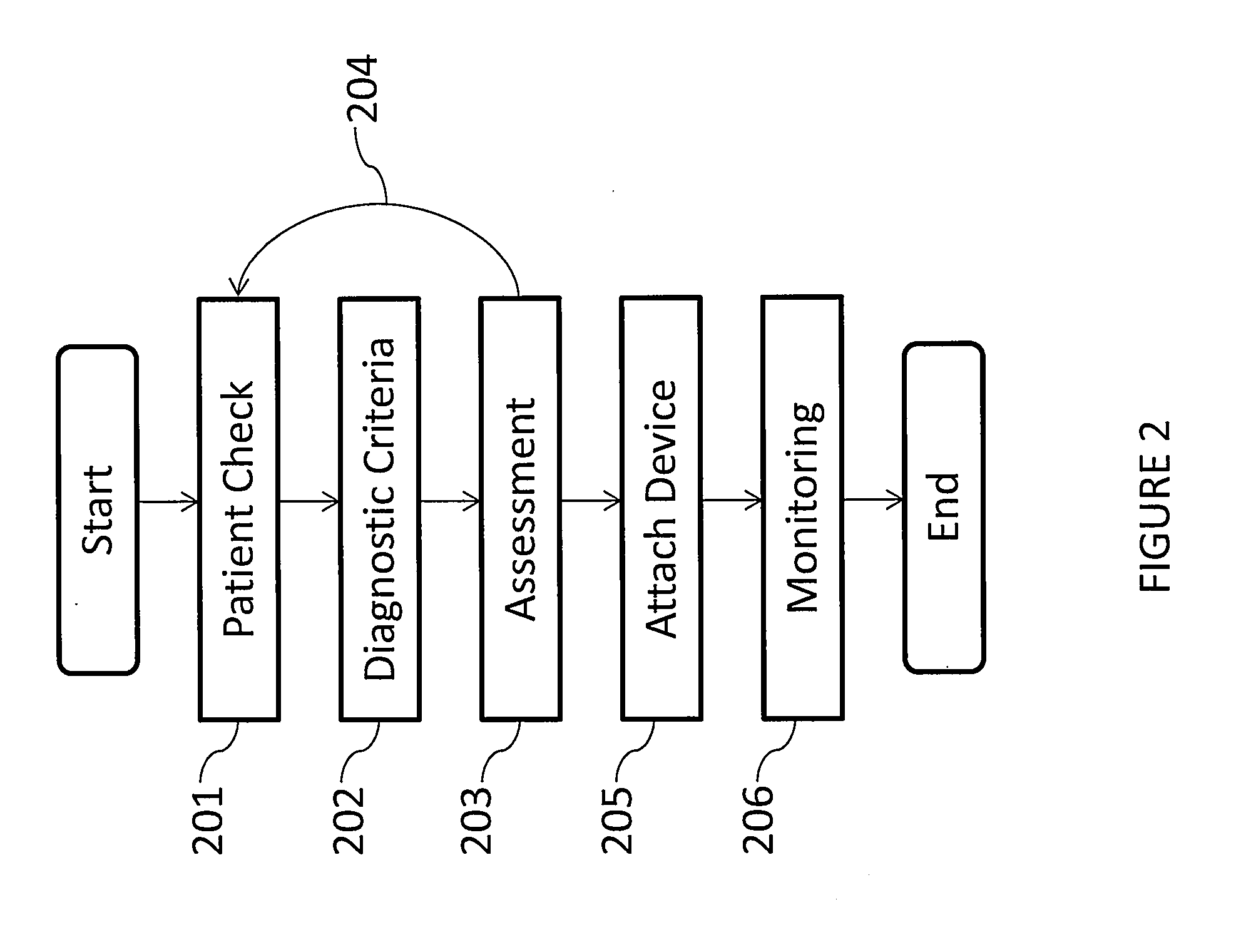Accelerometer and wireless notification system
a technology which is applied in the field of accelerometer and wireless notification system, can solve the problems that patients can not adhere and achieve the challenge of achieving adherence to the recommended body angl
- Summary
- Abstract
- Description
- Claims
- Application Information
AI Technical Summary
Benefits of technology
Problems solved by technology
Method used
Image
Examples
example 1
Use of a Device of the Invention for Managing Posture of a Subject Receiving mechanical ventilation
[0066]An elderly patient with respiratory distress is admitted to an intensive care unit of a hospital. The patient is intubated and placed on mechanical ventilation. To lower the risk of the patient developing ventilator-associated pneumonia, a device of the invention is affixed to the patient's sternal region to monitor upper body movements and posture.
[0067]A nurse turns on a computer system, for example, a tablet, adjacent to a vital sign monitor of the patient and opens an application of the device. In the application, the nurse enters data related to the patient, including new or old patient, patient name, patient medical record number (MRN), and name of provider, such as nurse or doctor. An initial setup screen of the application on the computer system guides the setup of the device. The first step in the setup screen is activation of the device. The nurse unpackages a device fr...
example 2
Pilot Study to Determine Efficacy of the Disclosed Device for Reducing Ventilator-Associated Pneumonia
[0074]Purpose:
[0075]The purpose of the study is to evaluate the efficacy of a device of the invention in managing mechanically-ventilated patients and reducing the risk of developing ventilator-associated pneumonia.
[0076]Methods:
[0077]In a hospital, 100 mechanically-ventilated subjects enter a placebo-controlled, double-blind, randomized study.[0078]1) Experimental arm: 50 mechanically-ventilated subjects are configured with a device as outlined in Example 1.[0079]2) Control arm: 50 mechanically-ventilated subjects are configured with a placebo device not equipped to monitor posture metrics.
[0080]Subjects in the experimental and control arms are inspected at regular time intervals post-attachment, for example, Day 0, Day 1, Day 2, Day 3, and Day 7, for symptoms of ventilator-associated pneumonia. Since ventilator-associated pneumonia can develop, for example, about 48 to about 72 ho...
example 3
Computer Architectures
[0083]Various computer architectures are suitable for use with the invention. FIG. 7 is a block diagram illustrating a first example architecture of a computer system 700 that can be used in connection with example embodiments of the present invention. As depicted in FIG. 7, the example computer system can include a processor 702 for processing instructions. Non-limiting examples of processors include: Intel Core i7™ processor, Intel Core i5™ processor, Intel Core i3™ processor, Intel Xeon™ processor, AMD Opteron™ processor, Samsung 32-bit RISC ARM 1176JZ(F)-S v1.0™ processor, ARM Cortex-A8 Samsung S5PC100™ processor, ARM Cortex-A8 Apple A4™ processor, Marvell PXA 930™ processor, or a functionally-equivalent processor. Multiple threads of execution can be used for parallel processing. In some embodiments, multiple processors or processors with multiple cores can be used, whether in a single computer system, in a cluster, or distributed across systems over a net...
PUM
 Login to View More
Login to View More Abstract
Description
Claims
Application Information
 Login to View More
Login to View More - R&D
- Intellectual Property
- Life Sciences
- Materials
- Tech Scout
- Unparalleled Data Quality
- Higher Quality Content
- 60% Fewer Hallucinations
Browse by: Latest US Patents, China's latest patents, Technical Efficacy Thesaurus, Application Domain, Technology Topic, Popular Technical Reports.
© 2025 PatSnap. All rights reserved.Legal|Privacy policy|Modern Slavery Act Transparency Statement|Sitemap|About US| Contact US: help@patsnap.com



